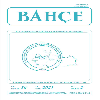IŞINLANMIŞ POLEN TEKNİĞİ İLE ELDE EDİLMİŞ DİHAPLOİD YAZLIK KABAK (Cucurbita pepo L.) SAF HATLARININ MEYVE VE TOHUM ÖZELLİKLERİ
THE FRUIT AND SEED CHARACTERISTICS OF SUMMER SQUASH (Cucurbita pepo L.) PURE LINES DERIVED FROM IRRADIATED POLLEN TECHNIQUE
___
- 1. Abak, K., Sakin, M., Karakullukçu, Ş., 1990. Improvement of pumpkin for naked seeds. 23. International Horticultural Congress, Italy, Abstracts Book 2:3074.
- 2. Anonim, 2019. Bitkisel üretim istatistikleri (http://www.tuik.gov.tr; Erişim Tarihi: Kasım 2019).
- 3. Anonymous, 2018. FAO production (http:// www.fao.org/faostat/en/#data/qc; Erişim Tarihi: Kasım 2019).
- 4. Çağlar, G., Abak, K., 1997. Obtention of haploid embryo and plants with pollination by irradiated pollens in cucumber genotypes. Proc. of Turkish Second National Hort. Congress 2:159-162.
- 5. Düzeltir, B., 2004. Çekirdek kabağı (Cucurbita pepo L.) hatlarında morfolojik özelliklerine göre tanımlanma ve seleksiyon çalışmaları (Yüksek Lisans Tezi). Ankara Üniversitesi Fen Bilimleri Enstitüsü, 76s.
- 6. Ercan, N., Boyacı, F., 1997. Haploidi ve bitki ıslahındaki önemi. Akdeniz Ünviversitesi Ziraat Fakültesi Dergisi 10:381-390.
- 7. Escribano, S., Lazaro, A., 2009. Agro-morphological diversity of Spanish traditional melons (Cucumis melo L.) of the Madrid provenance. Genetic Resources and Crop Evolution 56:481-497.
- 8. Gürsöz, N., Abak, K., Pitrat, M., Rode, J.C., Dumas De Vaulx, R., 1991. Obtention of haploid plants induced by irradiated pollen in watermelon (Citrullus lanatus). Cucurbit Genetics Coop. 14:109-110.
- 9. Kurtar, E.S., 1999. Kabakta (Cucurbita pepo L.) haploit embriyo uyartımı ve bitki oluşturma üzerine araştırmalar (Doktora Tezi). Çukurova Üniversitesi Fen Bilimleri Enstitüsü, Adana.
- 10. Kurtar, E.S., Sarı, N., Abak, K., 2002. Obtention of haploid embryos and plants through irradiated pollen technique in squash (Cucurbita pepo L.). Euphytica 127:335-344.
- 11. Kurtar, E.S., Balkaya, A., 2017. Kabak türlerinin çeşit ıslahında biyoteknolojinin kullanımı. Bahçe 46(2):39-49.
- 12. Kurtar, E.S., Seymen, M., Türkmen, Ö., Paksoy, M., 2018. Çerezlik tohum üretimi için geliştirilen bazı kabak (Cucurbita pepo L.) ıslah hatlarının karşılaştırılması. Manas J. Agr. Vet. Life Sci. 8(2):1‐9.
- 13. Lotti, C., Marcotrigiano, A.R., De Giovanni, C., Resta, P., Ricciardi, A., Zonno, V., Fanizza, G., Ricciardi, L., 2008. Univariate and multivariate analysis performed on bio-agronomical traits of Cucumis melo L. Germplasm. Genetic Resources and Crop Evolution 55(4):511-522.
- 14. Murkoviç, M., Winkler, J., Pfannhauser, W., 1997. Improvement of the quality of pumpkin seed (Cucurbita pepo L.) by use of cluster analysis. First International Symposium on Cucurbits, Adana/Turkey, 41-46.
- 15. Nacar, Ç., Sarı, N., Mutlu, N., 2012. Determination of heterotic groups in summer squash (Cucurbita pepo L.) using morphological and molecular methods. Proceeding of the 10. Eucarpia Meeting on Genetics and Breeding of Cucurbitaceae, Antalya/Turkey, October 15-18. p:723-732.
- 16. Paris, H.S., 2001. History of the cultivar-groups of Cucurbita pepo. Horticultural Revıews Westport Then New York, 25:71-170.
- 17. Pochard, E., Dumas de Vaulx, R., 1979. Haploid parthenogenesis in Capsicum annuum L. In: J.G. Hawkes, R.N. Lester, A.D. Skelding (Eds.). Reprinted from The Biology and Taxonomy of the Solanaceae, Academic Press, New York, p:455-472.
- 18. Sarı, N., Yetişir, H., 2002. Some agronomical characteristics of doubled haploid lines produced by irradiated pollen technique and parental diploid genotypes in melons. Turkish Journal of Agriculture and Forestry 26(6):311-317.
- 19. Sarı, N., Solmaz, İ., 2007. Fruit characterization of some Turkish melon genotypes. 3. International Cucurbit Symposium, 11-17.09.2005. Townsville/ Australia. Acta Horticulturae 731:103-107.
- 20. Sauton, A., Dumas De Vaulx, R., 1987. Obtention de plantes haploides chez le melon (Cucumis melo L.) par gynogenese induite par du pollen irradie. Agronomie 7:141-148.
- 21. Sauton, A., 1988. Effect of season and genotype on gynogenetic haploid production in muskmelon Cucumis melo L. Scientia Horticulturae 35:71-75.
- 22. Seymen, M., Türkmen, Ö., Paksoy, M., Fidan, S., 2012. Determination of some morphological characteristics of edible seed pumpkin (Cucurbita pepo L.) genotypes. Proceedings of the 10. Eucarpia Meeting on Genetics and Breeding of Cucurbitaceae.
- 23. Seymen, M., Türkmen, Ö., Paksoy, M., 2013. Selection of edible pumpkin seeds (Cucurbita pepo L.) genotypes. Journal of Selçuk University Natural and Applied Science 2(4):29-39.
- 24. Solmaz, İ., Aras, V., Ünlü, H., Sarı, N., 2004. Türkiye’nin farklı bölgelerinden toplanan acur (Cucumis melo var flexuosus) genotiplerinde karakterizasyon. Türkiye 5. Sebze Tarımı Sempozyumu Bildirileri, 21-24.09.2004, Çanakkale, 75-81.
- 25. Szamosi, C., Solmaz, S., Sarı, S., Barsony, C., 2010. Morphological evaluation and comparison of Hungarian and Turkish melon (Cucumis melo L.) germplasm. Scientia Horticulturae 124:170-182.
- 26. Şensoy, S., Büyükalaca, S., Abak, K., 2007. Evaluation of genetic diversity in Turkish melons (Cucumis melo L.) based on phenotypic characters and RAPD markers. Genetic Resources and Crop Evolution 54(6):1351-1365.
- 27. Toprakkarıştıran, G., 1997. Çekirdek kabaklarında seleksiyon ıslahı: 1. döl kademesinin elde edilmesi (Yüksek Lisans Tezi). Ankara Üniversitesi Fen Bilimleri Enstitüsü, 34s.
- ISSN: 1300-8943
- Yayın Aralığı: Yılda 2 Sayı
- Başlangıç: 1968
- Yayıncı: Atatürk Bahçe Kültürleri Merkez Araştırma Enstitüsü
AHIR GÜBRESİ VE AZOTLU GÜBRE UYGULAMALARININ DEREOTU (Anethum graveolens L.) VERİMİ ÜZERİNE ETKİSİ
SERT KABUKLU MEYVE TÜRLERİNİN VAN GÖLÜ HAVZASINDA MEVCUT DURUMU VE POTANSİYELİ
ALTERNATİF PROTEİN KAYNAĞI OLARAK BÖCEKLERİN KANATLI KARMA YEMLERİNDE KULLANIMI
Mehmet Akif ÖZCAN, Mustafa MİDİLLİ
DİYARBAKIR YÖRESİ BAZI CEVİZ GENOTİPLERİNDE (Juglans regia L.) KÜMELEME ANALİZİ
Koray ÖZRENK, Bahar YILMAZ, Berfin KIZGIN, Sıddık KESKİN
ŞALAK KAYISISI VE IĞDIR İÇİN ÖNEMİ
Turan KARADENİZ, Berna DOĞRU ÇOKRAN
SSR MARKÖR SİTEMİ KULLANARAK KAVUNLARDA SAFLIK DÜZEYLERİNİN TAHMİN EDİLMESİ
Önder TÜRKMEN, Necibe KAYAK, Ali Tevfik UNCU
İKLİM DEĞİŞİKLİĞİNİN TÜRKİYE SALIX TÜR DAĞILIMINA ETKİLERİ
Pelin ACAR, Nurbahar USTA BAYKAL
‘OWARİ SATSUMA’ MANDARİN ÇEŞİDİNİN SOĞUKTA MUHAFAZASINA SODYUM METABİSÜLFİT UYGULAMALARININ ETKİLERİ
Ahmet Erhan ÖZDEMİR, Safder BAYAZIT, Mustafa DİDİN, Najd ALAKRAA, Hasan Kaan GÜRSES, Mehmet Kazım AKI
